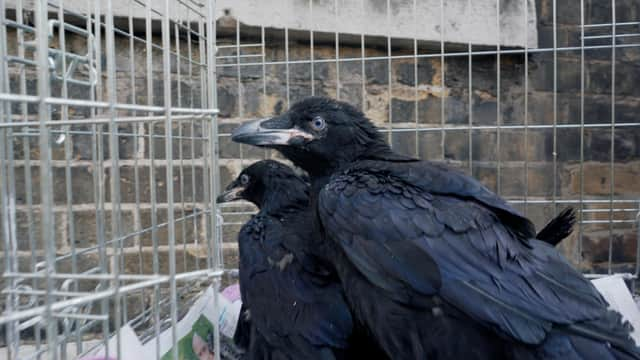Branwen name meaning: Tower of London raven name explained – and what is the collective noun for ravens?


The Tower of London has celebrated the end of its longest closure since the Second World War by asking the public to name its latest arrival: a raven chick.
One of four raven chicks born in March to the Tower’s resident breeding pair, the name of the young corvid was decided by a public vote which ran between 4 and 18 May.
Advertisement
Hide AdAdvertisement
Hide AdThe public were given the names of five historically significant women to choose from, with pioneering nurse Florence Nightingale and the legendary literary Bronte sisters among them.
Florence, Matilda, Bronte, and Winifred are the names that did not make the cut, with the majority voting in favour of ‘Branwen’.
But what does that name mean, and what is its significance?
Here is everything you need to know.
What does Branwen mean?
While there is no convention governing the naming of the Tower’s ravens, traditionally they were named in honour of the person who had gifted them to the palace.
The name Branwen was chosen as an option in the poll in honour of the Celtic deity of the same name, whose name translates as ‘Blessed Raven’.
Advertisement
Hide AdAdvertisement
Hide AdBranwen and her brother Edgar – named after writer Edgar Allan Poe, famous for his poem, ‘The Raven’ – will stay in London, taking the Tower’s number of resident ravens to nine.
With raven accommodation at the Tower now full, their two siblings will move outside the capital.
“We’re delighted to have two new chicks joining the raven community here at the Tower,” said Yeoman Warder Chris Skaife, Ravenmaster of the Tower of London. “There’s a lot of pressure when picking names for these famous feathered residents.”
The new chicks were born to Huginn and Muninn, the Tower’s resident breeding pair, who take their names from the ravens of the Norse, god Odin.
Advertisement
Hide AdAdvertisement
Hide AdThey’re the newest members of the Tower’s conspiracy – the collective noun for a group of ravens.
The winning name was announced as part of the Tower of London’s reopening as lockdown restrictions eased across England to allow indoor hospitality venues and attractions to open once more.
Visitor income at the Tower has been hit hard by the coronavirus pandemic, but the attraction opened its doors again after a five-month closure on 19 May with a number of safety measures in place for visitors.
Why are the ravens important?
The legend of the ravens says that if the birds leave the Tower, the kingdom and the Tower itself will fall, with King Charles II thought to be the first monarch to demand the protection of the birds over 300 years ago
Advertisement
Hide AdAdvertisement
Hide AdEver since, a minimum of six ravens have traditionally been kept at the famous fortress, serving as something of a national insurance policy.
The chicks are the result of the Tower of London’s raven breeding programme, which was started in 2019 with the ambition of securing the future of the Tower’s corvid community.
According to the Tower of London, “Edgar and his sister will get to enjoy a diet as gory as the site’s legendary history, with a menu of raw meat brought fresh from Smithfield market by the Ravenmaster, alongside an egg a week, and even the occasional rabbit for good measure.”
A message from the editor:
Thank you for reading. NationalWorld is a new national news brand, produced by a team of journalists, editors, video producers and designers who live and work across the UK. Find out more about who’s who in the team, and our editorial values. We want to start a community among our readers, so please follow us on Facebook, Twitter and Instagram, and keep the conversation going.